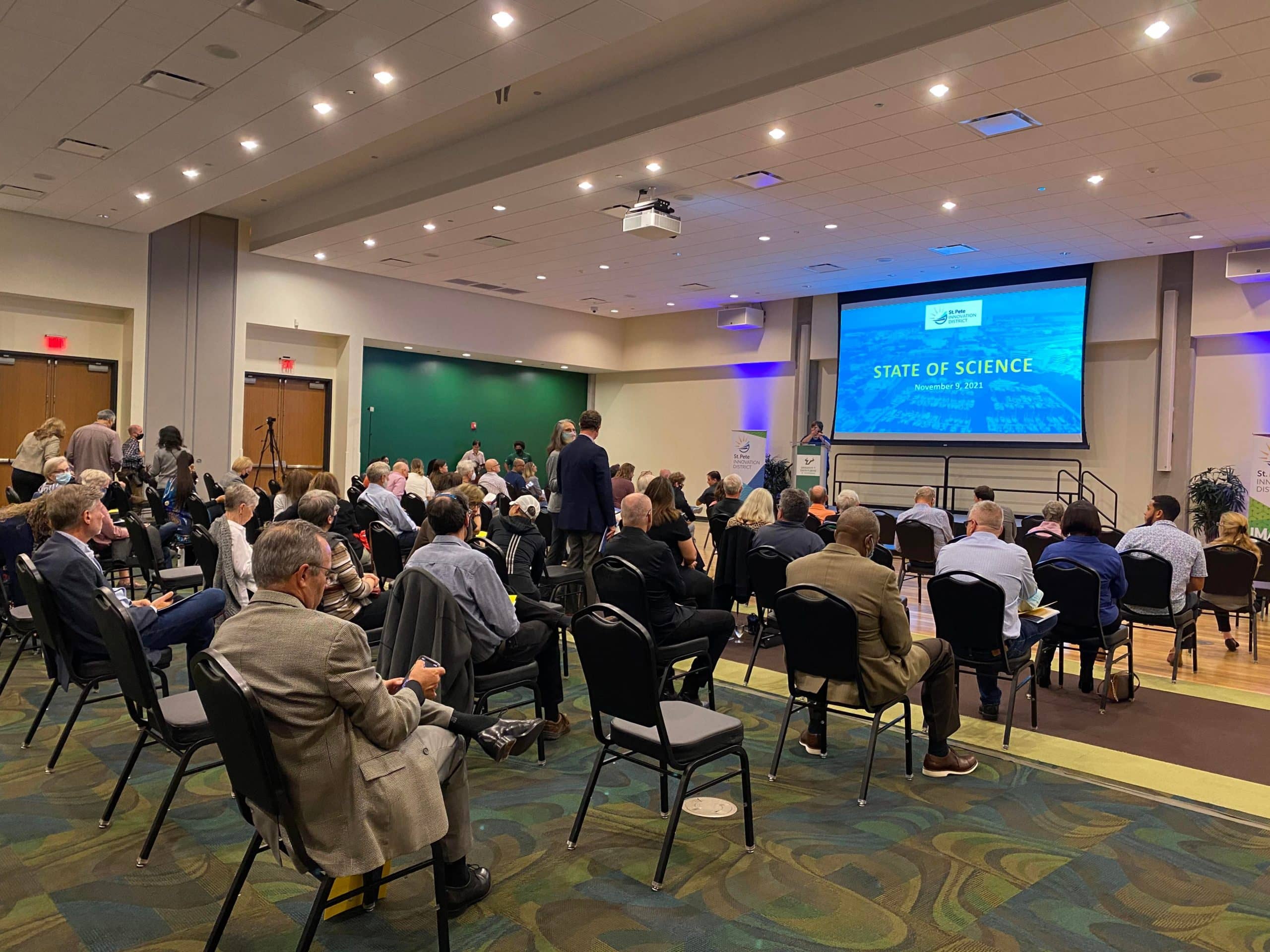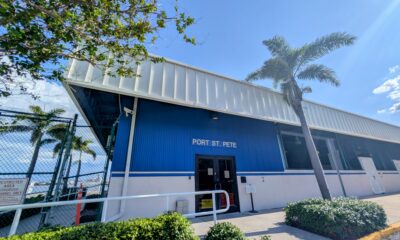Innovate
Innovation District event sheds light on its evolution, new scientific discoveries

The Innovation District was formed in 2016 with a vision of bolstering the life science and marine science sector; today, it makes up nearly a third of the city’s workforce in several industries with over 7,500 workers.
The annual Innovation District State of Science event, held Wednesday at the University of South Florida St. Petersburg campus, provided insight into the growth of the district and the excitement surrounding the future opening of the region’s first-ever Maritime and Defense Technology Hub – to be home to more than a dozen companies.
Here are some highlights about the district today, according to slides presented by speakers at the event:
- 91% work in health care, education and public administration in the district; 73% of the workforce are females
- 86% of employees within the district exceed state and local average earnings
- 29% of the city’s federal dollars are used in district
- 65 federal contracts and 166 federal grants have been used in the district as of 2020
The annual State of Science event also sheds light on entrepreneurs and leaders in the defense, life science and marine science sectors who discuss their latest breakthroughs and programs taking shape within the district.
Speakers and topics for this year’s event ranged from USF professors to researchers who presented how new technologies are being used in St. Petersburg to predict the impact of storm surges to training military members on how to save lives on the battlefield.
Here are some takeaways from the speakers and the latest innovations unfolding in the district:
The responses have been edited for clarity and brevity.
Steve Murawski, professor at the USF College of Marine Science: Leading the way in ocean mapping technology: We need to close the gap on using navigation and resource management to understand the impacts of being a coastal community. In the last legislation, $100 million was approved for more coastal mapping in Florida. As part of our group, we established a testbed from Pass-a-Grille up to John’s Pass. We have so many people living so close to the ocean, they are subject to hurricanes and other issues. There’s an array of technologies to get those kinds of maps – satellites to LIDAR (light detection and ranging) from aircraft and a vessel. We are going to deploy a number of these technologies in the area in December. We are mixing the precision of various platforms to understand underwater area the built-in infrastructure. Because the intersection is where you have problems like storm surge. The information will be incorporated into models that will be used to predict parcels that are most at-risk for storm surges.
Sean Doody, professor at USF College of Arts and Sciences: Tracking wildlife and spread of diseases like Covid-19: What if I told you the pandemic could have been avoided? Or if we don’t make certain changes, we will see another pandemic in our lifetime? I am going to make the argument animal trafficking should be considered the worst form of illegal trafficking (above human and drug trafficking) in collateral damage. Sciences says that the SARS-CoV-2 was mainly found in bats, but we had other viruses that went through other animals. The DNA from SARS-CoV-2 is similar to Malayan pangolins, a scaly anteater. They are used as a food source and their scales are used for medicinal purposes. We don’t have a smoking gun that can see which viruses jump from one another and to humans. We do know illegal pangolins were trafficked in China at the Wuhan market in China when and where the Covid-19 virus originated. These markets have tons of dead and alive animals that are piled and lots of people around – it’s a perfect environment for viruses to jump to different species. A million pangolins have been trafficked over the last 10 years. The goal is to bring more awareness to animal trafficking.
Lorraine Parker, chief nursing officer and assistant vice president at Bayfront Health St. Petersburg: Training the military’s elite to save lives: Bayfront Health St. Petersburg is working in collaboration with MacDill Air Force in training elite military members in the Special Forces and Navy Seals on how to save lives on the frontlines. The military members get experience through hands-on trauma management procedures. Bayfront is only one of four hospital participants in this program. Because of Covid, we stopped rotations and we now started bringing them back. Trauma Medical Director Dr. Jeffrey Johnson oversees the program. He has served as a lead surgeon in Iraq so he takes complete ownership of this program to give them the skills they need to bring back to the battlefield. We have been doing this program for 15 years and have trained over 1,000 soldiers based out of Fort Bragg. The program is only for 25 days, but it is all hands-on and focuses on stabilizing the patient. I was able to witness the team handle a traumatic motorcycle accident. It was a great opportunity to run the trauma code. The patient has multiple fractures and the soldier saved this patient’s life. For him, he said it was terrifying but realized he really did know what to do if something occurred on the frontlines. When on the battlefield, these soldiers will have a backpack with small medical ventilators and scopes.
Luis Ahumada, director of predictive analytics and analytic methodology at Johns Hopkins All Children’s Hospital: Understanding the impact of Covid on pediatric transplants: We are trying to understand the effects of heart transplants during the pandemic especially for pediatric patients. There is limited data on how this affected transplants. The temporary hold on elective procedures had disruptions overall in health care. Surprisingly, we did see the adult population decrease on the waiting list. Pediatric deaths remained effectively the same, it dropped slightly.
Esteban Orte, lead engineer at Duke Energy: Changing the future of power transmission: Duke recently opened a substation in the district that’s the only one in Florida. The new substation will replace the old station in 2022. It will use gas instead of air and will provide more power in a smaller space. Since gas is five times heavier than air, it can be contained in a smaller space. The footprint is also 35% less than the older space and will look like a regular building.
Michael Gates, CEO and founding partner at Gates Defense Systems: Revolutionizing tools for situational awareness: Gates was unable to attend. Gates Defense Systems is one of the tenants for the new Hub center.







